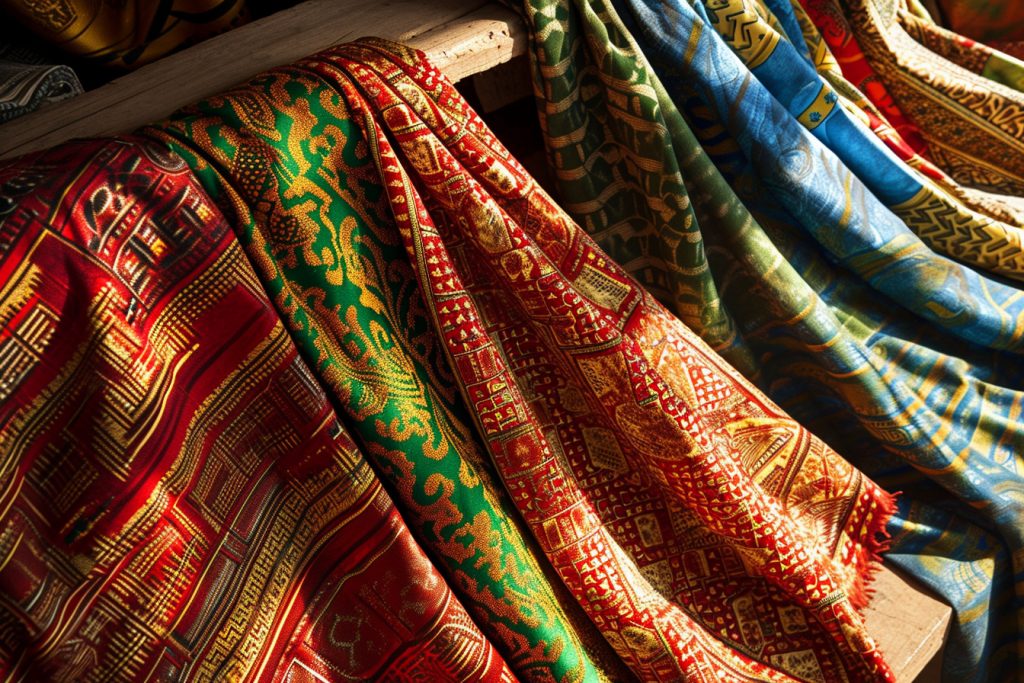Africa, a continent beaming with color and culture, holds a wealth of tradition in its textiles. Each pattern intricately woven into the fabric tells a story, each thread a carrier of history. From the kente cloth of Ghana to the Berber weaves of North Africa, the continent’s textile heritage is as rich and diverse as its people. In "Vibrant Weaves: A Tour of African Textiles," we’ll journey through the awe-inspiring world of African weaving, unraveling tales spun from millennia past, analyzing patterns that transcend simple aesthetics, and exploring the innovations that continue to evolve the craft.
Unraveling the Threads of History
African textiles are as old as the civilizations that once thrived on this abundant land. The stories woven into each piece stretch back to ancient times when pharaohs robed themselves in linen, and warriors donned bark cloth. Fabrics like the Egyptian cotton, renowned for its high quality, attest to a longstanding tradition of textile production on the continent—skills passed down from generation to generation, preserving an art form that intertwines with the cultural identity of its people. As we dig deeper, we find a rich tapestry of influences: trade routes brought in dyes from Asia, while colonial histories introduced new materials and methods, all leaving an indelible mark on the textile narrative of Africa.
In many African cultures, textiles are more than mere adornments; they are emblematic of social and political standing, with certain patterns and materials earmarked for royalty and ceremonies. For example, the Malian mud cloth, or bògòlanfini, each design distinct and deeply symbolic, narrates stories of village life, historical events, and ancestral proverbs. As historians and anthropologists studied these fabrics, they further unraveled the historical significance and connectivity of African societies, revealing a piece of the human tapestry that is both vibrant and vitally informative.
Patterns That Tell Stories
Patterns in African textiles are not just designs; they are a language of their own. The Ashanti people of Ghana express concepts through the kente cloth, where every hue, every weave, signals a different concept or social message. Yellow symbolizes wealth and fertility, while green conveys growth and renewal. Interwoven within these fabrics are tales of heroism, wisdom, and communal values, each garment a vibrant manuscript of cultural expression. One could spend a lifetime decoding the visual vocabulary etched into these materials—a testament to the complexity and significance of textile design in African cultures.
Similarly, the intricate embroidery of the Hausa people of West Africa sometimes conveys messages understood only within the community, adding layers of meaning to each garment. The Berber tribes of Northern Africa embed their weaves with Amazigh symbols that have safeguarded their heritage for centuries, standing as a proud declaration of identity and resistance against assimilation. It’s through this intricate tapestry of symbols that one comes to appreciate the storytelling prowess and creative spirit of African societies—a tapestry as rich in narrative as any written literature.
Innovations in African Weaving
Amidst an ever-evolving global landscape, African weaving continues to be reimagined through innovation and fusion of traditional techniques with modern aesthetics. The introduction of digital looms and synthetic dyes has expanded the palette and possibilities of what can be produced, allowing for greater experimentation and intricate designs. These advancements haven’t diluted the traditional essence; instead, they’ve amplified the ability of weavers to preserve their heritage while reaching new markets and adapting to contemporary tastes.
Yet, one of the most exciting innovations in African textiles is the push towards sustainability and ethical production. With a natural inclination towards eco-friendly materials, many African textile producers are now incorporating organic fibers, using natural dyes, and promoting fair trade practices. This not only ensures the longevity of the art form but also addresses the growing global demand for responsible fashion. The result is a thriving textile industry that stays true to its roots while setting the pace for a future where tradition and sustainability weave together seamlessly.
From the warp and the weft of ancient fabrics to the cutting-edge designs being produced today, African textiles are a compelling testament to the continent’s rich and varied cultural landscape. As we’ve explored the history, the stories, and the innovations within this vibrant art form, one thing becomes crystal clear—African textiles are not just threads and colors. They are a powerful fabric of identity, heritage, and innovation, ever-evolving yet steadfastly woven into the heart of African life. Whether you’re a fashion aficionado or a curious cultural connoisseur, "Vibrant Weaves" invites you to delve deeper, look closer, and appreciate the myriad patterns that make the tapestry of African textiles a true world treasure.









